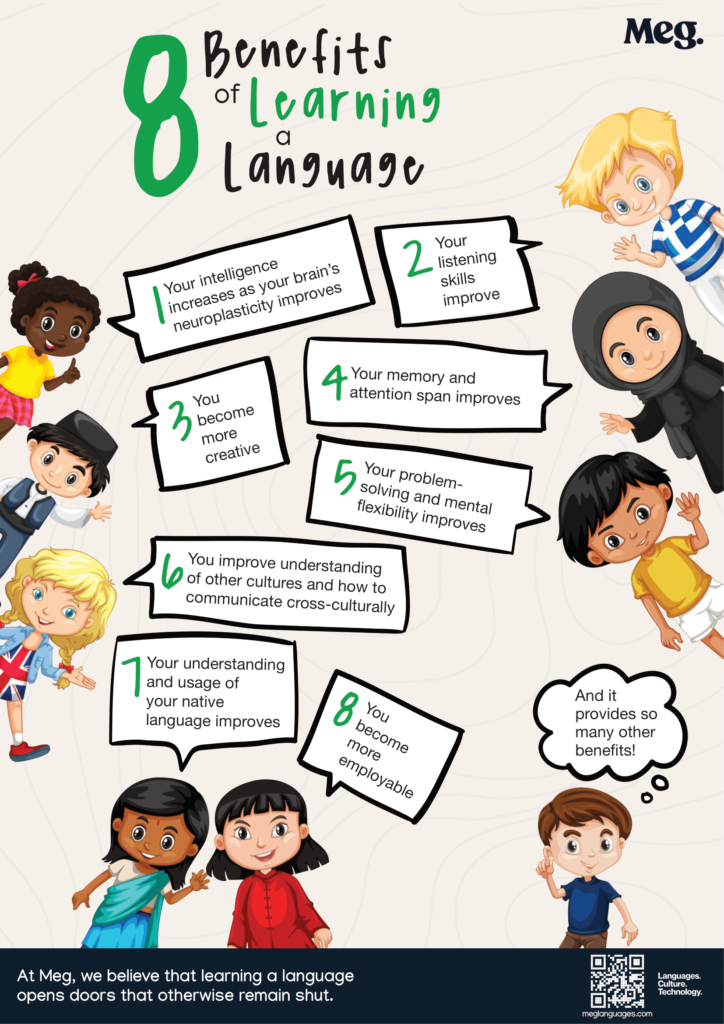5 Ways to Build Confidence in Your Students as They Embark on Their Journey to Learn Spanish
There’s a good reason why many people refer to learning a language as a “journey”—it takes a lot of time, practice, and learning from one’s mistakes. That’s why getting kids excited and motivated to learn a new language is a challenge for teachers. Have you ever wondered, how can I encourage my students that they have what it takes to learn a new language? Don’t worry, you’re not alone!
Here are 5 ways to support and grow your student’s confidence to learn Spanish.
1. Give them context and understanding of the language
There are many benefits to learning a language that students can get behind, from improving their memory to enhancing their ability to multitask. Helping students understand the value of learning a language is a great starting point for building excitement around these new skills.

2. Set their expectations—learning a language is hard and doesn’t happen overnight
Learning a language is like learning any other skill, it takes time to master. According to Language Testing International, to reach an intermediate level it can take an average of 160 hours. This breaks down to four school years with 3 lessons a week. Fortunately, it’s not just about the number, it’s about the amount of participation and practice. Luckily, students have lots of tools they can use to help them learn along the way.
3. Show them they have what it takes!
Learning a new language can feel overwhelming for students but to help them there are many strategies they can use to discover the meaning of new words. Teachers can help students practice these strategies so they feel empowered and confident in their ability to learn a new language. Soon enough your students will be speaking Spanish!
- Visuals: Students can use visuals to help them interpret the meaning of a word
- Gestures: Students can watch any physical gestures to interpret the meaning of a word
- Cognates: The cognate of a word has the same linguistic derivation as another. There are three types of cognates in total that students can look for and believe it or not, there are hundreds of English – Spanish cognates, such as:
- Words that are spelled exactly the same, i.e. Hospital, horrible, doctor, capital
- Words that are spelled slightly differently, i.e. Celebration = celebración; elegant = elegante; represent = representar
- Words that are spelled differently but sound similar, i.e. Accident = accidente; triangle = triangulo; hamburger = hamburguesa
But be wary, there can be some false cognates, which are words that look spelled and sound similar but have different meanings.
4. Make lots of guesses and remember, mistakes are okay!
Perhaps the most important strategy to reinforce in students is for them to trust their instincts. Many times it can be nerve-wr acking to guess the meaning of a word but after using these strategies, those educated guesses will most likely be accurate. The only way to improve is to practice, so encourage students to keep trying!
“How can I encourage my students that they have what it takes to learn a new language?”
5. Celebrate the small stuff and have fun!
Lastly, have fun with learning and celebrate the small wins. Whether it is a greeting or answering a question, providing students with a lot of positive reinforcement goes a long way to creating a welcoming and rewarding space for language learning in the classroom.
By implementing these five strategies—providing context, setting expectations, introducing tools, promoting educated guessing, and celebrating achievements—teachers can help students realize the tools that are already at their disposal to decode and understand new words. These simple approaches go a long way to help students’ confidence and create a welcoming space for language learning in the classroom.

Before joining Meg Languages, Anahi Villar taught Spanish at independent schools for five years. She has experience teaching kindergarten through eighth grade, serving on the board of trustees as a faculty member, and being a DEI facilitator.

